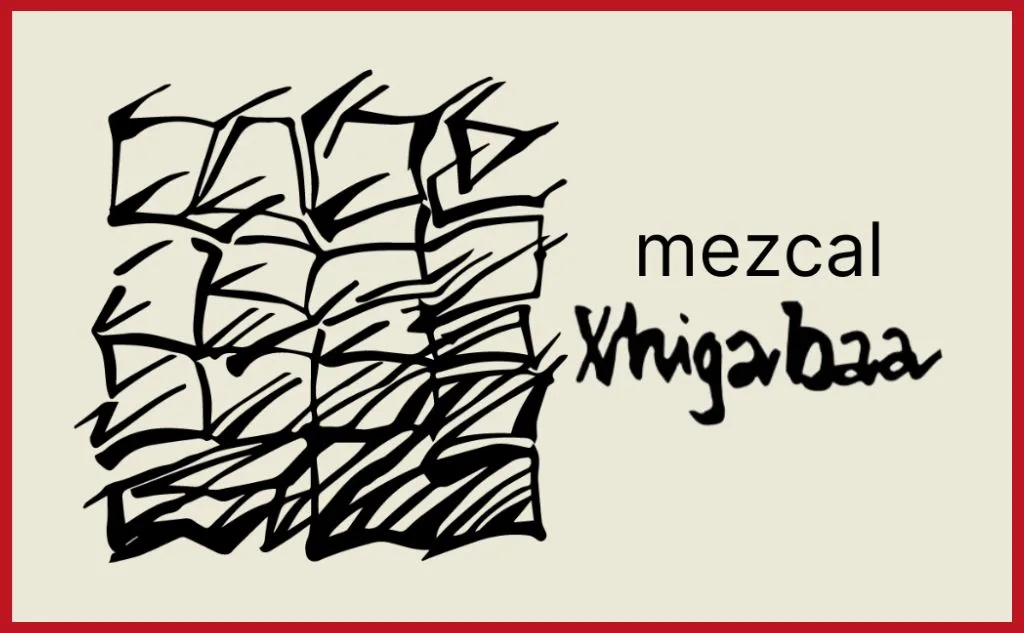Process
MEZCAL XHIGABAA
An ancient techniques with deep knowledge of agave
Mezcal Xhigabaa
An Ancient Art
The Xhigabaa mezcal production process is an art that combines ancient techniques with deep knowledge of agave and its environment.
Every stage of the Xhigabaa mezcal process, from agave cultivation to distillation and bottling, is essential, creating a drink rich in flavor and tradition that reflects the dedication and craft of the master mezcalero.
Our Process…
Mezcal Xhigabaa
An Ancient Art
The Xhigabaa mezcal production process is an art that combines ancient techniques with deep knowledge of agave and its environment.
Every stage of the Xhigabaa mezcal process, from agave cultivation to distillation and bottling, is essential, creating a drink rich in flavor and tradition that reflects the dedication and craft of the master mezcalero.
Our Process…
Sowing
The creation of Xhigabaa begins with the cultivation of Angustifolia agave, traditionally known as Espadín. This plant is notable for its versatility, resilience, and adaptability to diverse climates and soils. Additionally, it offers exceptional mezcal quality due to the high concentration of sugars accumulated over nearly a decade.
The Espadín agave used for Xhigabaa requires a maturation period of between seven and eleven years. This makes it a more sustainable option for continuous mezcal production compared to other agave varieties.
La Jima
Once the agave has reached maturity, the “jima” is performed a process that involves harvesting and cutting the stalks of the agave to extract the heart of the plant, known as the “piña” or “agave heart”.
Sowing
The creation of Xhigabaa mezcal begins with the cultivation of Angustifolia agave, traditionally known as Espadín. This plant is notable for its versatility, resilience, and adaptability to diverse climates and soils. Additionally, it offers exceptional mezcal quality due to the high concentration of sugars accumulated over nearly a decade.
The Espadín agave used for Mezcal Xhigabaa requires a maturation period of between seven and eleven years. This makes it a more sustainable option for continuous mezcal production compared to other agave varieties.
La Jima
Once the agave has reached maturity, the “jima” is performed a process that involves harvesting and cutting the stalks of the agave to extract the heart of the plant, known as the “piña” or “agave heart”.
Cooking
The hearts are placed in conical stone ovens built underground, where they are slowly cooked with heated stones. This process imparts the distinctive smoky flavor to Xhigabaa.
Milling
After the agave completes the cooking process, it is placed in a stone mill known as a “tahona”. Here, a large stone wheel, traditionally moved by a horse, crushes the agave into a fibrous texture.
Cooking
The hearts are placed in conical stone ovens built underground, where they are slowly cooked with heated stones. This process imparts the distinctive smoky flavor to Xhigabaa mezcal.
Milling
After the agave completes the cooking process, it is placed in a stone mill known as a “tahona”. Here, a large stone wheel, traditionally moved by a horse, crushes the agave into a fibrous texture.
Fermentation
The crushed agave is placed in wooden vats, where water is added and left to ferment naturally for days or weeks, depending on environmental conditions and the desired mezcal style of the master mezcalero.
The fermentation process converts the crushed agave into a mash called “mosto”, from which the distillation process begins.
Distillation
Distillation is carried out in copper stills until a liquid known as the “heart cut” is obtained. This liquid is then refined to create the final spirit of Xhigabaa, characterized by a complex and balanced profile.
Fermentation
The crushed agave is placed in wooden vats, where water is added and left to ferment naturally for days or weeks, depending on environmental conditions and the desired mezcal style of the master mezcalero.
The fermentation process converts the crushed agave into a mash called “mosto”, from which the distillation process begins.
Distillation
Distillation is carried out in copper stills until a liquid known as the “heart cut” is obtained. This liquid is then refined to create the final spirit of Xhigabaa, characterized by a complex and balanced profile.
Bottling
Once the final blend of Xhigabaa is ready, it is poured into a Bordeaux-style glass bottle.
This material enhances its properties, producing a mezcal known as joven (young) mezcal or blanco (white) mezcal.
This material enhances its properties, producing a mezcal known as joven (young) mezcal or blanco (white) mezcal.
Enjoy it
Share what is essential.
Bottling
Once the final blend of Xhigaba is ready, it is poured into a Bordeaux-style glass bottle.
This material enhances its properties, producing a mezcal known as joven (young) mezcal or blanco (white) mezcal.
This material enhances its properties, producing a mezcal known as joven (young) mezcal or blanco (white) mezcal.
Enjoy it
Share what is essential

